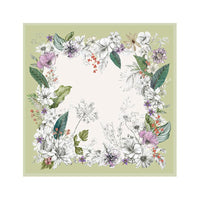Last time and a scarf factory counterparts big sister dinner, she said they a few years ago to take the German army inside a tactical scarf order, is this year's sales are not bad kind of Arab square scarf, before the order is several hundred thousand, made more than a few thousand in stock, still in the warehouse, did not think of this year and sold well. Real fashion rotation, I say this refurbishment is not yet because of the problem of fashion rotation, it should be other factors, I know the approximate reason, but here will not say. After all, we just make the product.

I had a misconception before that these types of scarves must be the least sold in the Middle East, and this information corrected my perception. We are just blind men feeling the elephant and only know one corner of the world.
I contacted a pet supplies program two years ago, I still know a lot about Germany, because at first contact with large dogs tactical dogs, not pet dogs, but contact with tactical dog collar collar and so on. The human-related collar and scarf market is not really understood.
German Army Tactical Shemagh (German Tactical Shemagh) is a multi-functional bandana, regardless of pattern or function, widely used in military, tactical and outdoor activities, it is one of the common equipment used by soldiers in the performance of the mission, it has a variety of functions and features to adapt to different tactical needs and operational environment. The following is a detailed introduction of German army tactical bandana:

II. Types and Styles
The tactical bandanas of the German army come in a wide variety of types and styles, but usually follow the design principle of camouflage or dark tones. Common tactical bandanas include cotton camouflage bandanas, nylon quick-drying bandanas, multifunctional tactical scarves and so on. These bandanas have their own characteristics in terms of material, thickness, pattern, etc., in order to adapt to different operational needs and climatic conditions.
I. Functional characteristics
Camouflage function: Tactical bandanas are usually designed with camouflage patterns or dark tones, which can provide effective camouflage effects in various terrains and environments to help soldiers conceal their figures and reduce the risk of being discovered by the enemy. In tactical environments, tactical bandanas can be used to cover the face and reduce the likelihood of detection.

Protective function: the material of the bandana is mostly breathable, sweat-absorbent and quick-drying fabrics, which can effectively protect the soldier's head and neck from external factors such as sand, dust, mosquitoes and other external factors, in order to protect the wearer from the effects of wind, sand, sunshine, cold and other harsh weather conditions. At the same time, some of the tactical bandanas also have the functions of sun protection and cold protection to adapt to different climatic conditions Multifunctionality: tactical bandanas have a wide range of uses, in addition to being used as a bandana, they can also be used as a neck scarf, face mask, eye mask, wrist guards, scarf, mask, visor, first-aid bandage, etc., which has a high degree of utility and other multiple uses to provide comprehensive protection and convenience for the soldiers.

Design and Material
1. Material: usually made of 100% cotton or cotton and polyester blended material, with good breathability and comfort.
2. Colors and Patterns: Common colors include black, green, brown, camouflage, etc. to suit different environments and uses. The common pattern is plaid design, this design is also common in Middle East tactical hijab.
Usage Methods
1. Hijab method: Fold the hijab diagonally into a triangle to cover the head and neck, and tie the ends crosswise behind or in front of the neck.
2. Mask method: Fold the bandana diagonally into a triangle, cover the nose and mouth, and tie the ends crosswise at the back of the head.
3. Scarf method: Directly put the headscarf around the neck and tie a knot to fix it.





